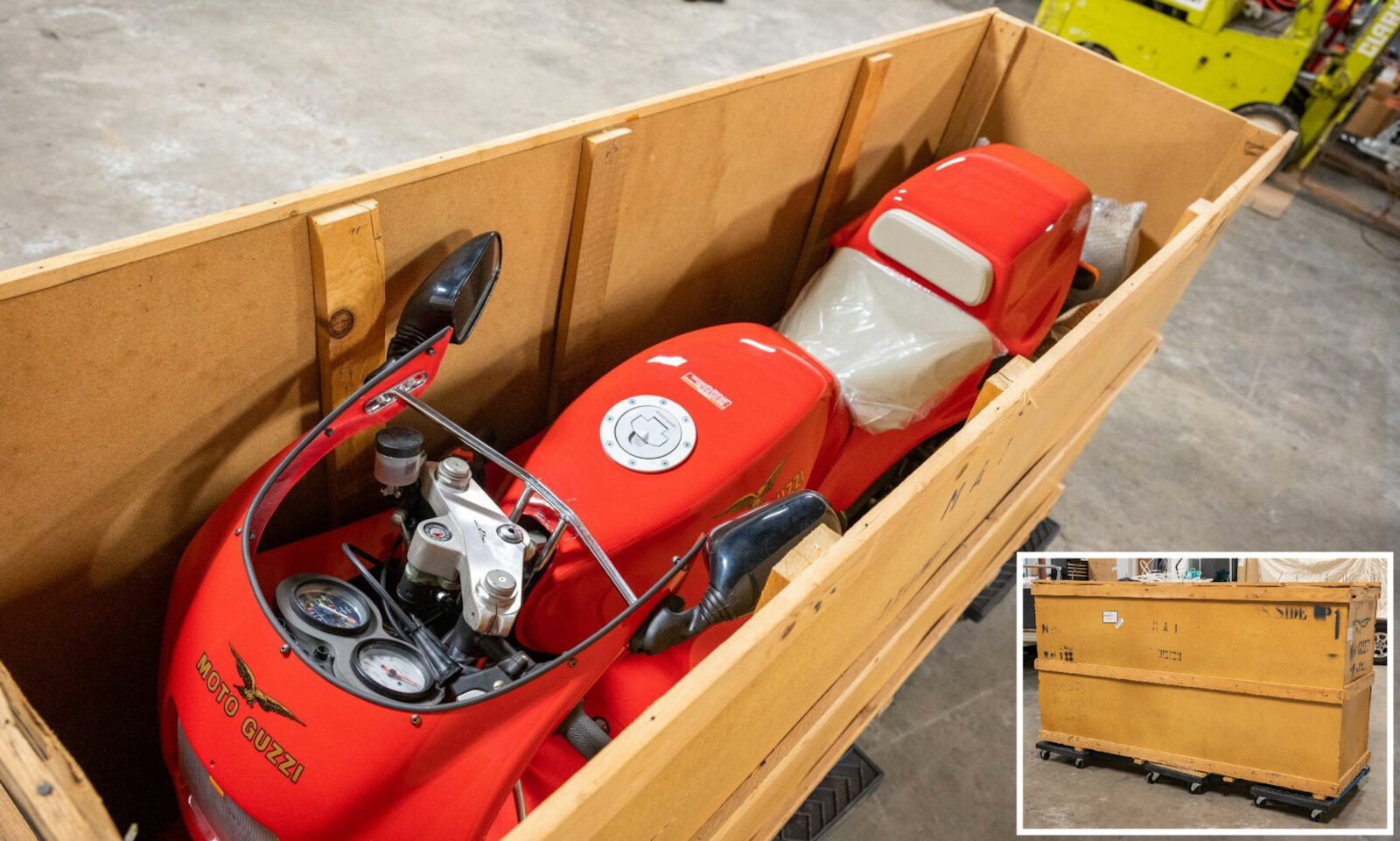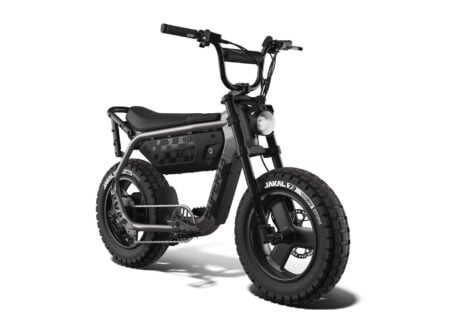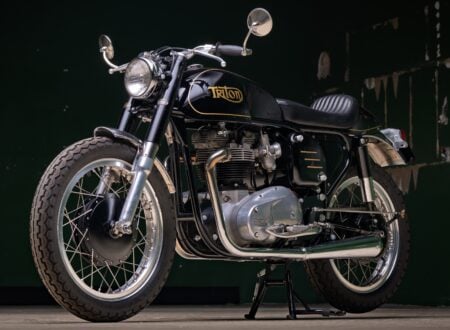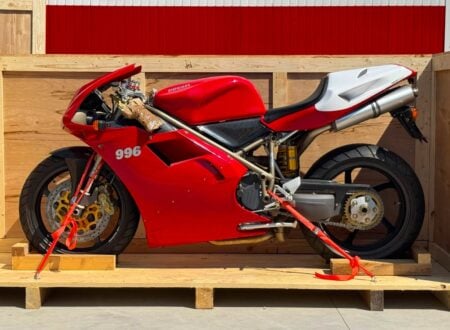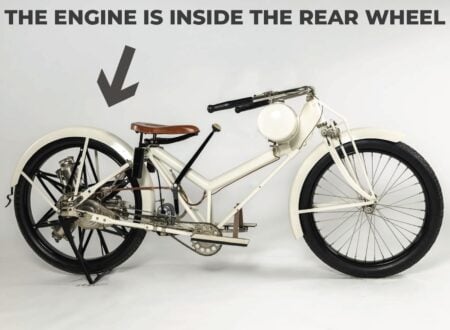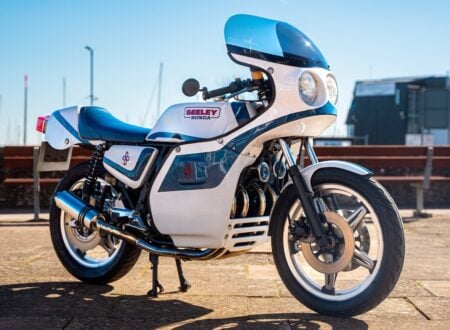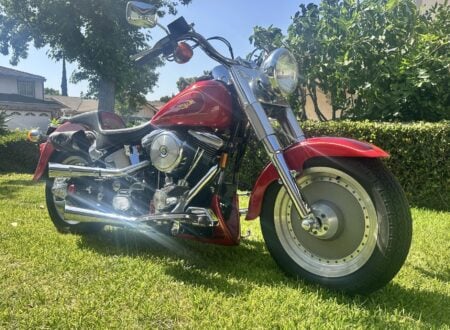This is a rare 1993 Moto Guzzi Daytona 1000, it would already be a desirable motorcycle however this one is a little unusual in that it remains packaged away in its factory crate, having never been removed since it left the Moto Guzzi factory in the early 1990s.
The Moto Guzzi Daytona 1000 was named for the Daytona Circuit, thanks to the victories achieved by the original racing version of the bike there by the legendary Dr John Wittner and his incredibly dedicated team of privateers who almost single-handedly put Moto Guzzi back on the map.
Fast Facts – The Moto Guzzi Daytona 1000
- The Moto Guzzi Daytona 1000 is possibly the only motorcycle in the world that can trace its lineage back to a dentist’s chair. Specifically the chair of Dr John Wittner, a keen racer who recruited a team made up largely of his dental patients, then went racing and shocked the world by winning back-to-back AMA Endurance Championships.
- In the 1980s Moto Guzzi was not in a good way financially. Like many of the formerly dominant European motorcycle marques they had failed to innovate in the face of Japanese competition.
- Despite this lack of innovation privateer racer Dr John Wittner chose the 1000cc Moto Guzzi Le Mans as his race bike, and thanks in no small part to Wittner’s engineering degree from Lehigh University he was able to turn it into a race winner.
- “Dr John” as he became known helped turn around Moto Guzzi’s flagging fortunes in the 1980s, for a time at least, and he co-developed a more advanced new motorcycle with the storied Italian company – the Moto Guzzi Daytona 1000.
The Incredible Story of “Dr John” Wittner
After leaving high-school John Wittner majored in engineering at Lehigh University before being shipped off to fight in Vietnam. He didn’t know it at the time but after his return to the USA he would become a dentist, an acclaimed motorcycle racer, and a multiple-championship winning privateer racing team owner.
Above Video: This is the media coverage of the 1985 AMA Motorcycle Endurance Race at Daytona, which was won by Dr John and his team. The Doctor makes an appearance on camera at the 2:30 mark to explain what the win means for him and the team.
After starting his first dentistry practice in Philadelphia, Wittner began to get to know his new raft of patients, many of whom would spend hours sitting in the dentist’s chair having work done and passing the time by chatting.
As a lifelong fan of motorcycles, Wittner had a special bond with patients who had similar leanings. Over time the idea of starting a privateer racing team began to take shape for the good dentist, and some of his patients signed up to join him including Bob Griffiths (the team’s Crew Chief), Ed Davidson (the Team Manager), and Noel Portelli (an early team rider).
Now that the beginnings of a team existed they needed to find a suitable motorcycle marque to target with their proposal. The nearest to Philadelphia was Moto Guzzi’s national headquarters which were then based in Baltimore, so Wittner made an appointment in early 1984 with the company president George A. Garbutt and drove up to Baltimore for the meeting.
There’s no historical record of what Garbutt thought of this confident dentist from Philadelphia but he obviously believed in him enough to agree to supply the team with a Moto Guzzi Le Mans III.
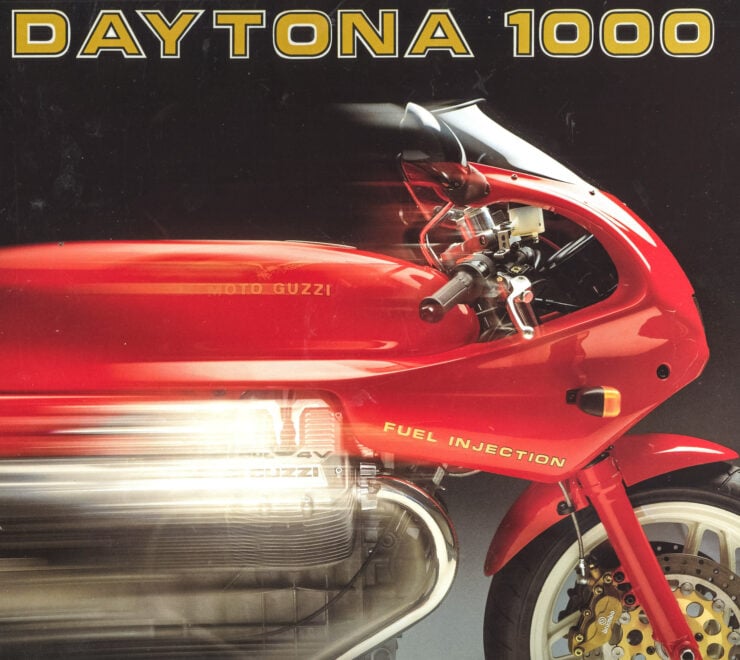

By the 1980s Moto Guzzi was in serious financial trouble after having failed to counter the onslaught of advanced motorcycles coming out of Japan. There was little spare money for designing new bikes and less money still for funding racing teams, but Garbutt clearly understood the importance of the “Win on Sunday, sell on Monday” motorsport mantra.
Despite the long odds against him Wittner, or “Dr John” as he became known, set up his racing team, named it Team Moto Guzzi, and then set about winning races even though the motorcycle he was using was built around a design that was at least 15 years out of date.
Thanks in no small part to his earlier engineering degree, Dr John was able to essentially re-engineer much of the Moto Guzzi Le Mans III to make it faster, so fast that it quickly became a weapon on track. He initially rode the bike himself in many races but soon hired professional grade riders when he realized that his rag tag little team had a real shot at winning the AMA Endurance Championship.
They didn’t just win the AMA Endurance Championship in 1984, they followed it up with another win in 1985 just to prove that the first hadn’t been a fluke. Suddenly Moto Guzzi was back on the map and the motorcycle world sat up and took notice.
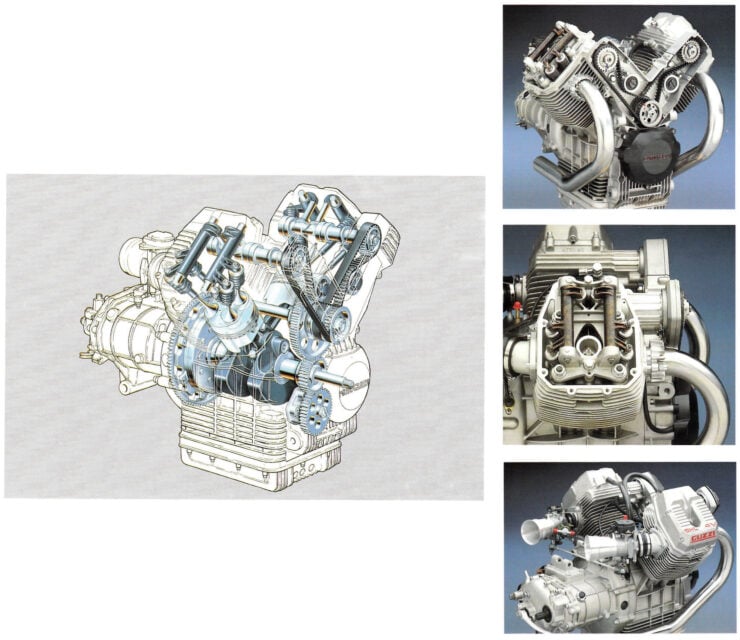

Before long Dr John was working directly with Moto Guzzi engineers including Umberto Todero who had already designed a 1000cc Moto Guzzi V-twin with a single overhead cam and four valves per cylinder, a marked technical improvement over the now antiquated Moto Guzzi engine with its pushrods and two-valves per cylinder.
The Moto Guzzi Daytona 1000
The program to develop the advanced Umberto Todero engine was restarted thanks to the excitement generated by the successful AMA racing program, with much engineering input into the design of the final motorcycle by Dr John himself.
A prototype would be unveiled at the 1989 Milan Motorcycle Show, it was a spectacular motorcycle with a red and white paint scheme, a sleek half fairing up front, a single seat with a rear cowl, and triple disc brakes.
The engine was still air-cooled, but benefitted from Weber-Marelli electronic fuel injection, overhead cams, and four-valves per cylinder offering much better flow in and out of the combustion chamber. It produced 95 bhp at 8,400 rpm and 72 lb dft of torque at 6,600 rpm, and it offered a top speed of 145 mph.
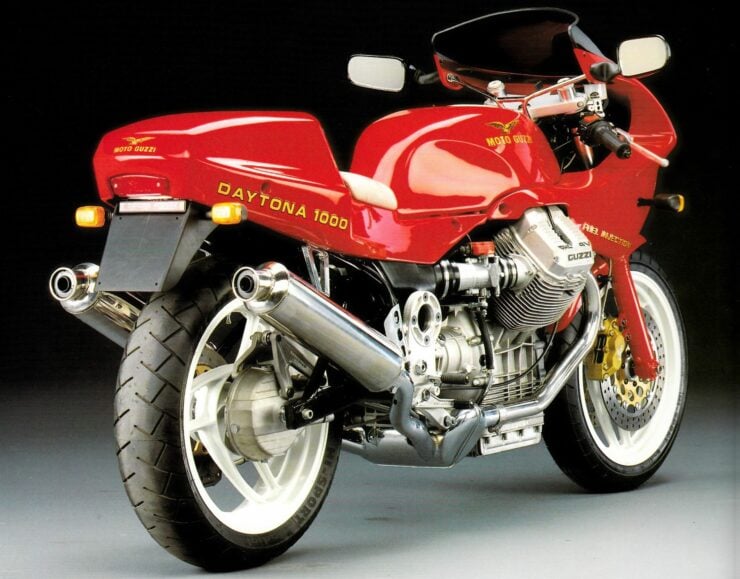

This new OHC 1000cc Moto Guzzi engine was considerably more powerful and free-revving that its predecessors, and orders flooded into Moto Guzzi dealerships on both sides of the Atlantic. The only serious problem is that Moto Guzzi wasn’t prepared to mass produce it, and it wouldn’t appear in dealerships until 1992, when some of the initial excitement had worn off.
The Moto Guzzi Daytona 1000 would remain in production from 1992 until 1999, and it would shape the future of the Italian company’s model offerings. Today the Daytona 1000 remains arguably the most important Moto Guzzi of the late-20th century.
The 1993 Moto Guzzi Daytona 1000 Shown Here
The motorcycle you see here is one of those highly-unusual bikes that for reasons unknown have remained inside their original factory crate – never dealer-prepared for delivery, never sold, and never ridden.
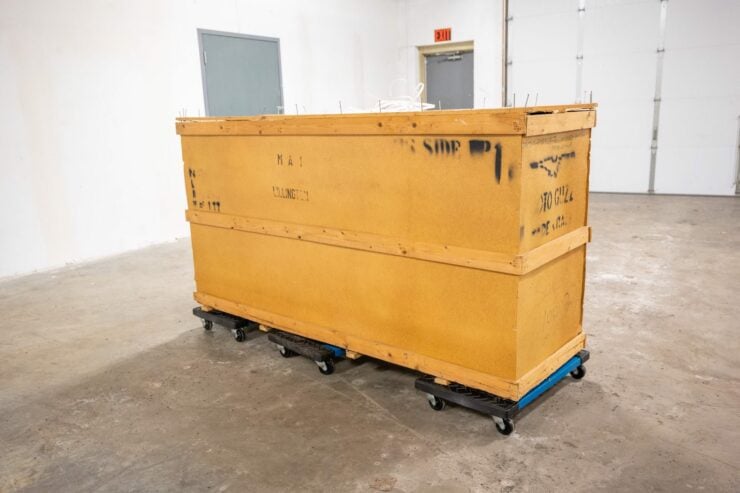

The Moto Guzzi Daytona 1000 remains a relatively rare 1990s-era superbike, they certainly didn’t sell in numbers anywhere near that of their Japanese rivals, or the motorcycles from Ducati for that matter, but it’s uncommon to find them with only the factory delivery miles on the odometer like this.
This bike was originally delivered to Cycle Specialties of Athens in Bogart, Georgia, in November of 1992. It’s finished in red with a gray solo seat, and it’s still accompanied by its warranty registration card, a pre-delivery checklist, manufacturer’s certificate of origin, and the bill of sale.
If you’d like to read more about it or register to place a bid you can find the listing on Bring a Trailer here. It’s being sold out of Bloomington, Minnesota and it’ll be up the the new owner whether they want to take it out of the crate and ride it or keep it preserved as-is.
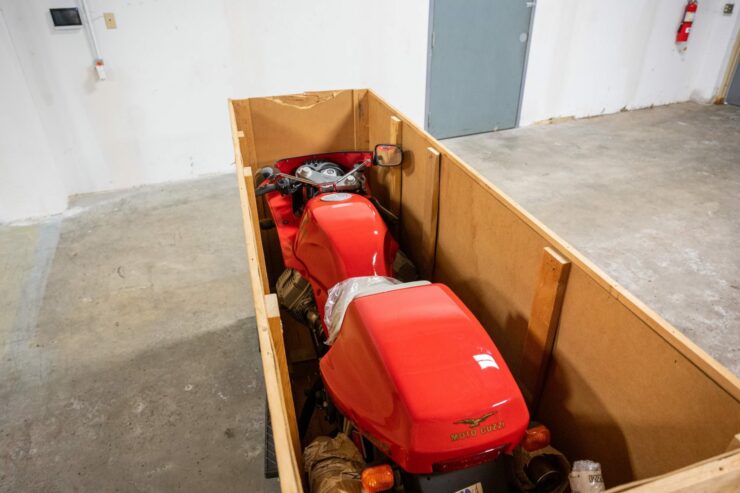
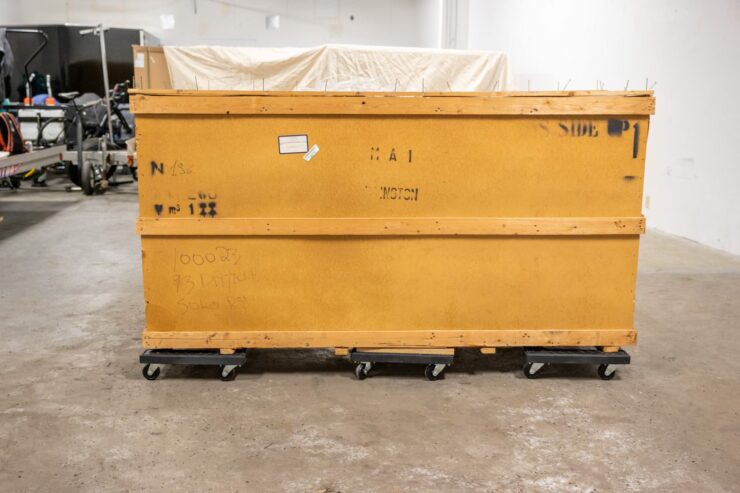
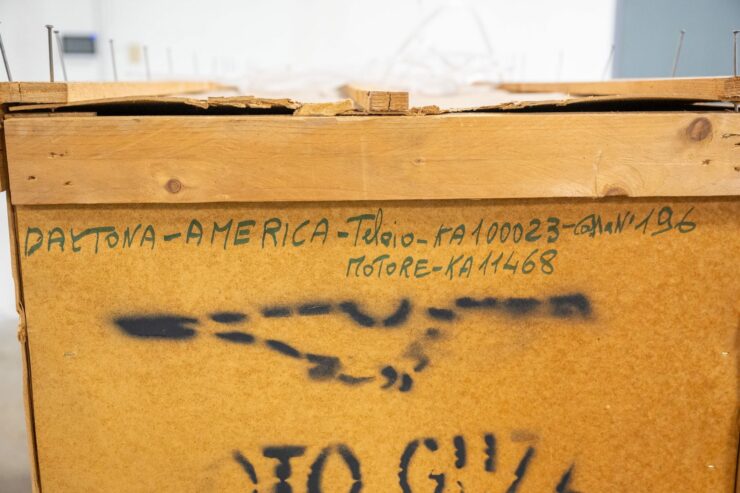
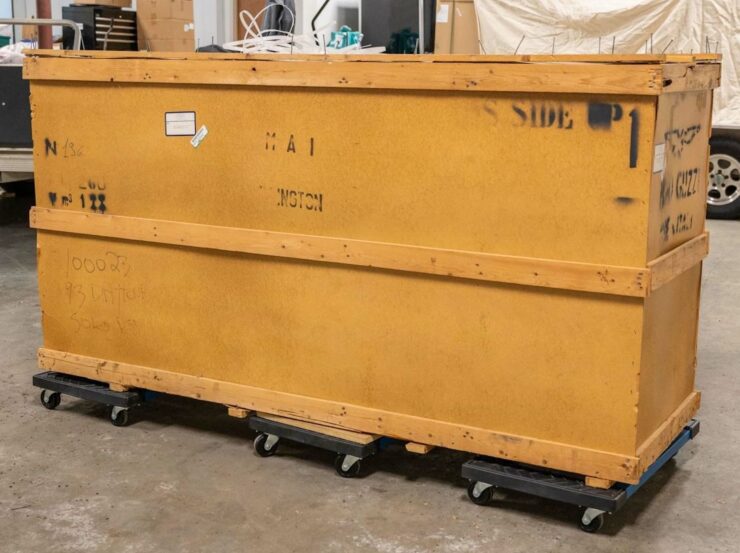
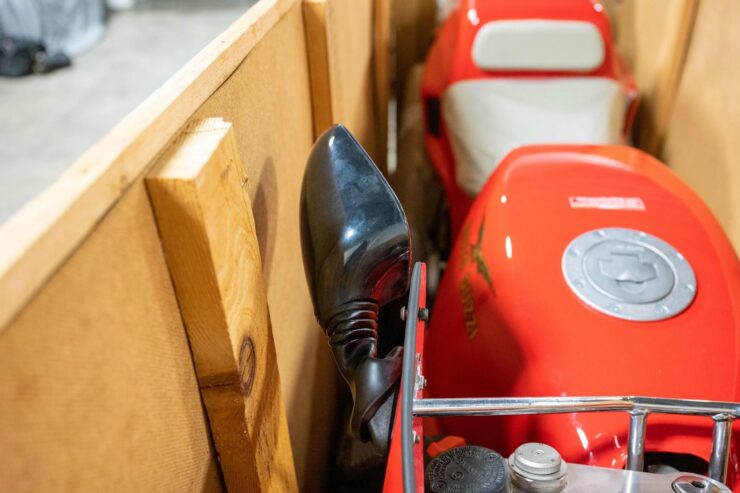
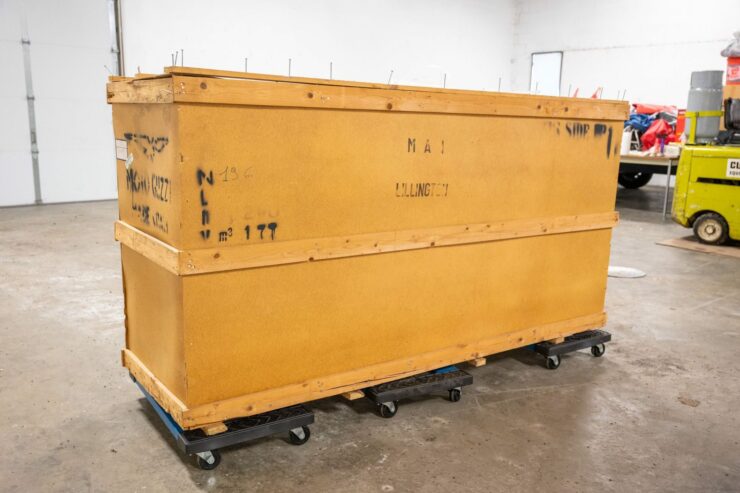
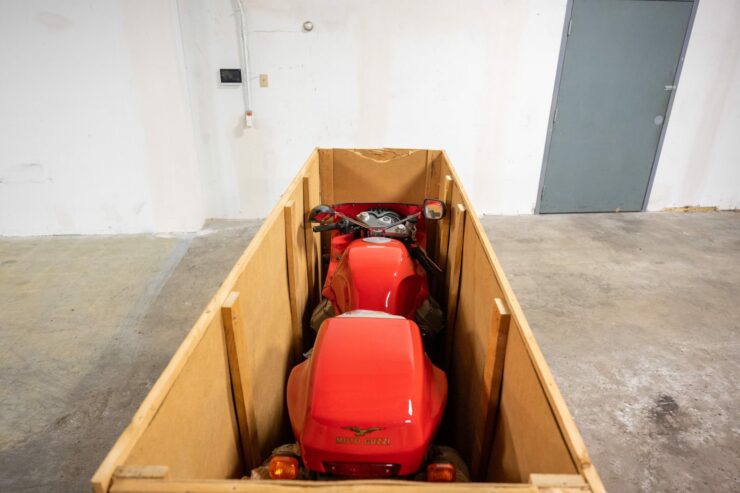
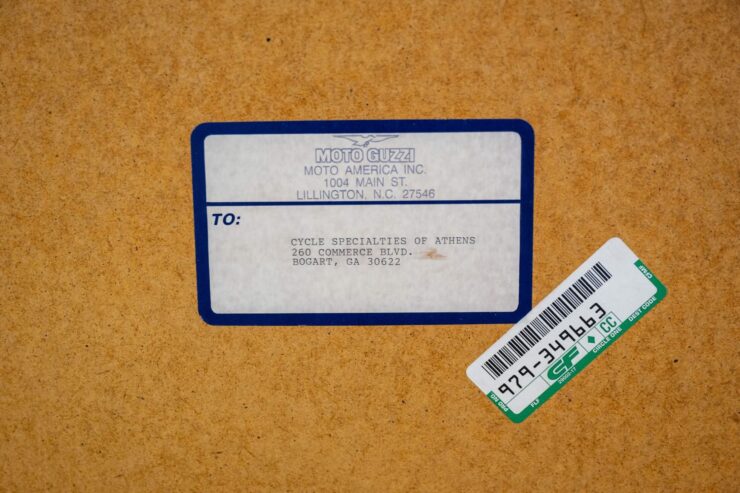

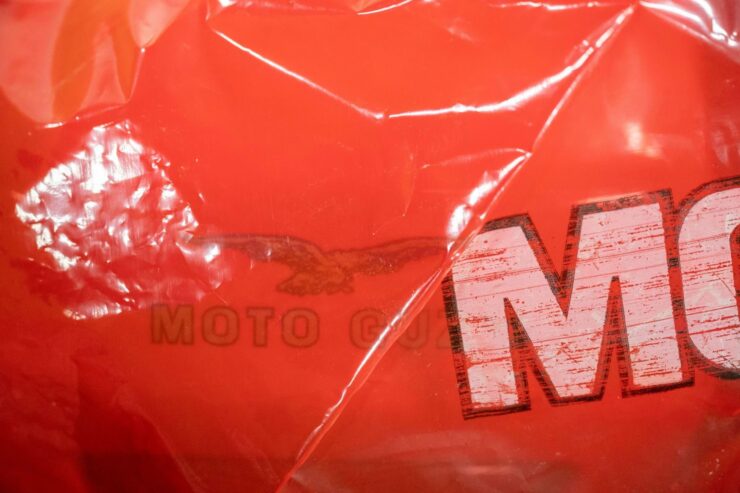
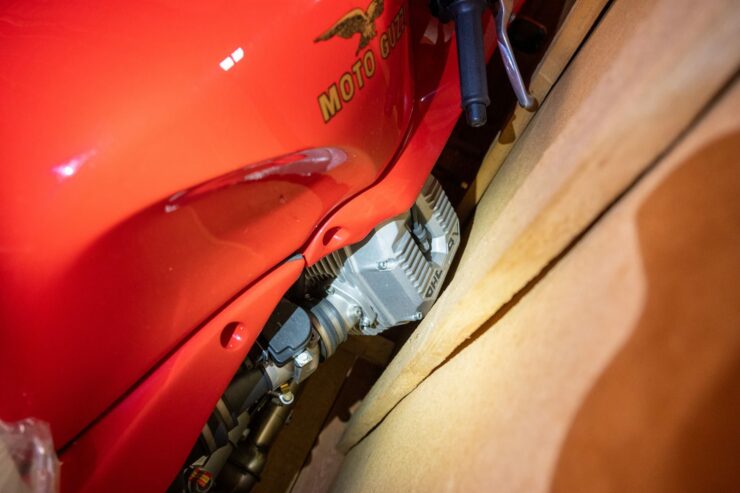

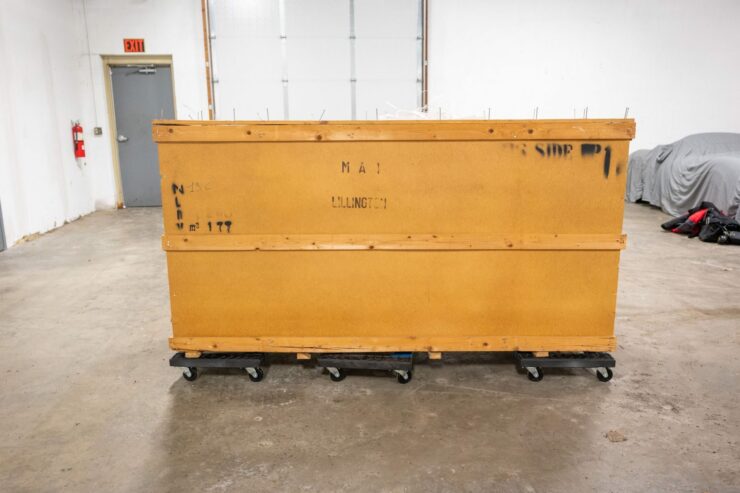
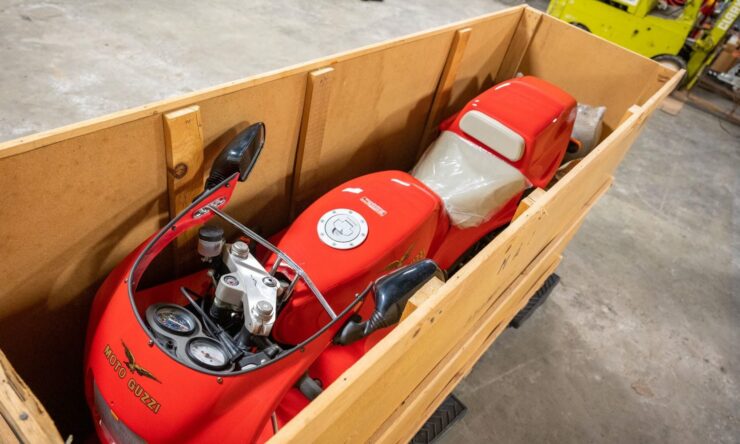
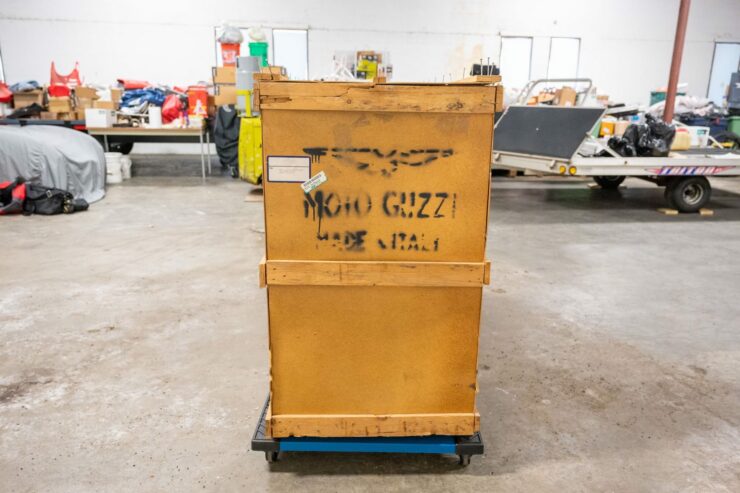
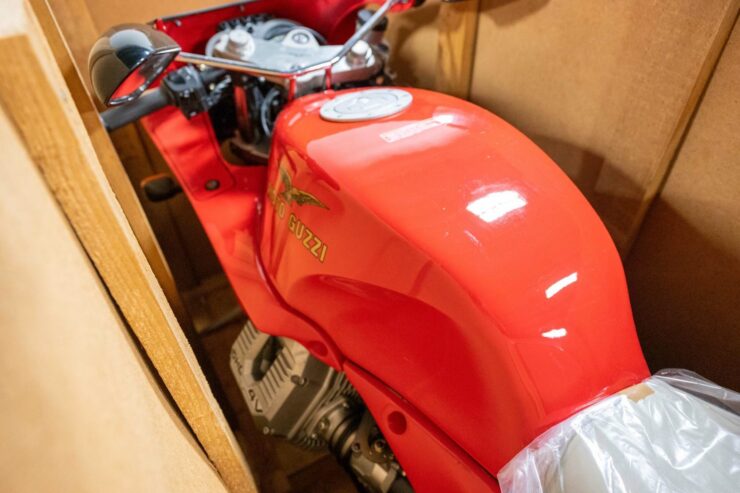
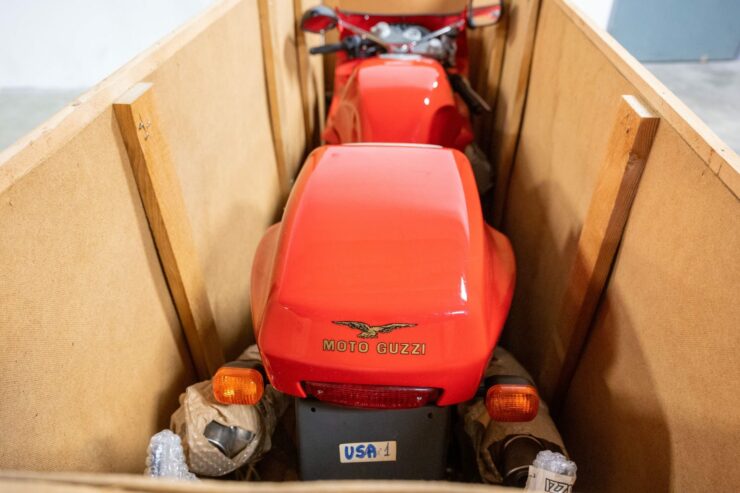
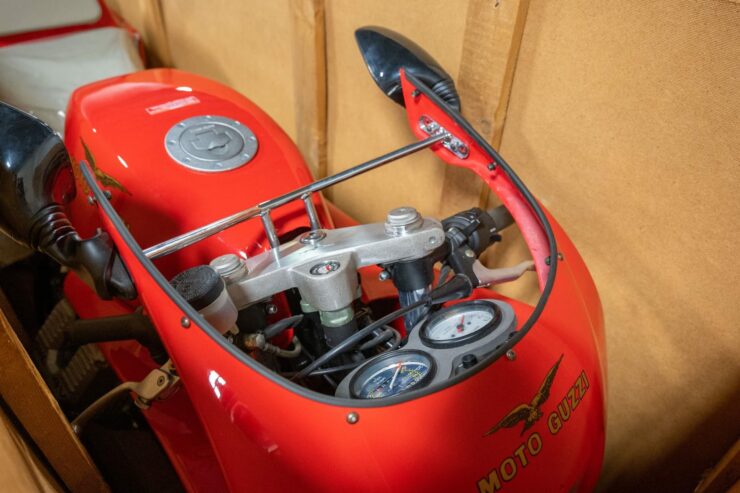

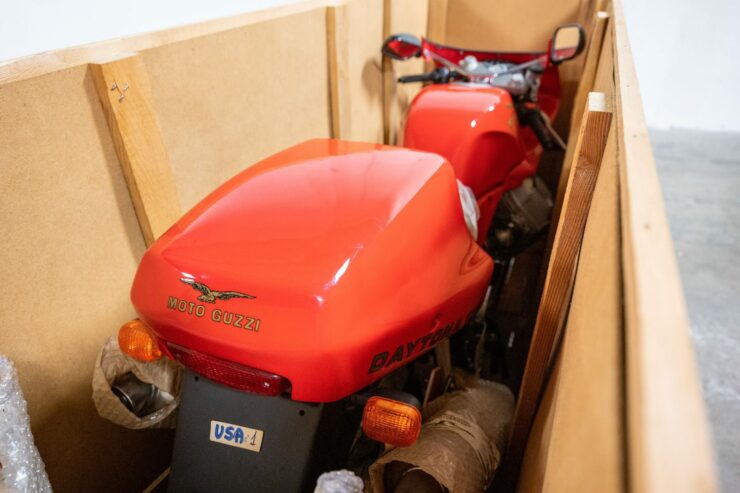
Images courtesy of Bring a Trailer

